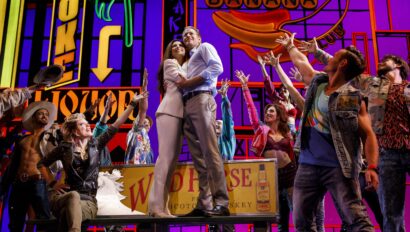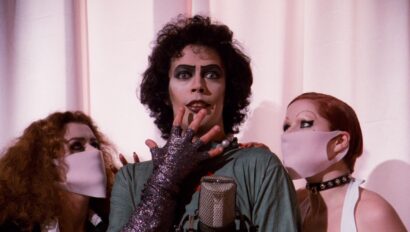Behind the Scenes with Donald Phipps, Donor and Technical Consultant of The Mighty Wurlitzer Organ
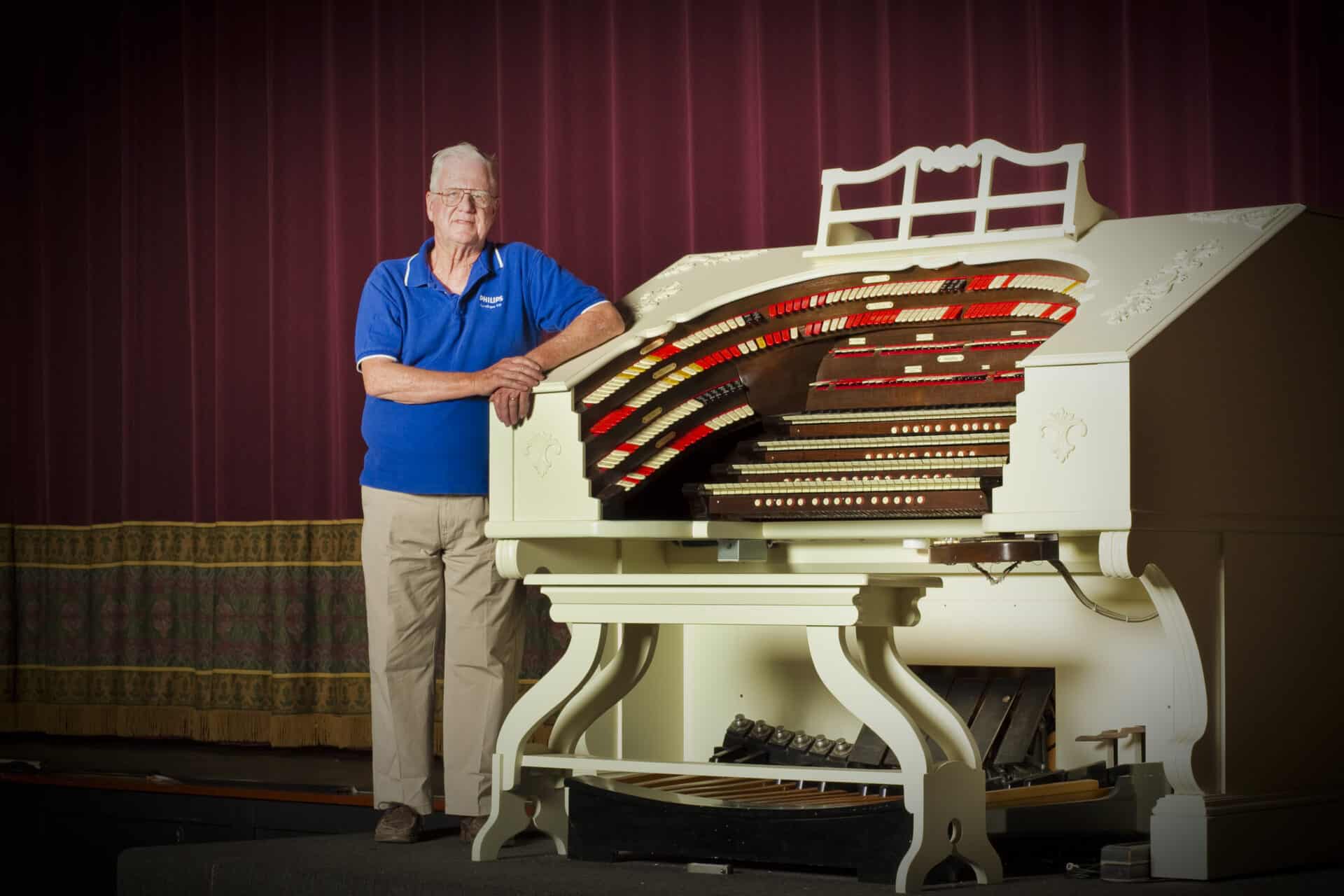
Lisa Condit spoke with Donald Phipps, Donor and Technical Consultant of the Mighty Wurlitzer Organ about donating the organ, his background with the instrument and more! Read on for highlights from the interview, or listen to the full interview below. Tune in to Talk of the Commonwealth with Hank Stolz on WCRN 8:30 AM Fridays at 9 AM and Saturdays at 1 PM for more behind-the-scenes interviews.
Lisa Condit: Welcome back to Behind the Scenes. This is Lisa Condit and I’m here with Don Phipps, the man behind our organ. Don has been involved with us since before our theatre opened and it’s because of his generosity that we have New England’s largest theatre pipe organ. Don, welcome to our program.
Don Phipps: Thank you. It’s a pleasure to be here.
Lisa: Don, you have so much history and so much expertise wrapped up in what you do and we’re so fortunate to have you. You’ve been a major supporter of the theatre, you had your recent birthday party at the theatre and you’re the one that turned us on to our organists that have come to play this beautiful instrument. Tell us a little bit about how you got started with collecting and working on organs.
don’s interest in pipe organs
Don Phipps: My interest in pipe organs goes back to when I was five years old. An aunt of mine lived in Boston and took me to Tremont Temple Baptist Church and there was this huge Casavant pipe organ. I came out of there with my eyes looking like saucers. I came home, and I told my mother that someday I was going to be organist of Tremont Temple. We kept it in the family because at one time, my brother was assistant organist of Tremont Temple. Unfortunately, the one thing that was lacking, as far as my aspirations went, was the fact that I had no talent when it came to playing the organ, but I’ve had 64 wonderful years of working with pipe organs. First, I started an apprenticeship building church organs at Aeolian-Skinner. But, upon realizing that a job back in those days paid the magnificent sum of 80 cents an hour, I thought it might be better to go back to college, learn engineering and keep organs as a hobby, which I did until I retired at the age of 58. Then, I had the chance to get back to my first love and pursue it full time ever since.
Lisa Condit: This really is a labor of love. You mentioned your brother, you have a whole team that I refer to as Don’s posse, your organ posse. Do you want to give a little bit of a shout out to the other people who helped you with the organ at The Hanover Theatre?
don’s posse
Don Phipps: Well, we have a wonderful crew here. There are four main workers, my brother John, Len Beyersdorfer, who’s also the very talented resident organist of The Hanover Theatre and Bruce Hager. We have a group that’s very devoted to this project.
Lisa Condit: You are the sweetest group of men I think I’ve ever met in my life, and you come and you work at The Hanover Theatre regularly, we always see you there. When did that start? When did you know that you are going to be able to work with us and you are going to be able to install our organ?
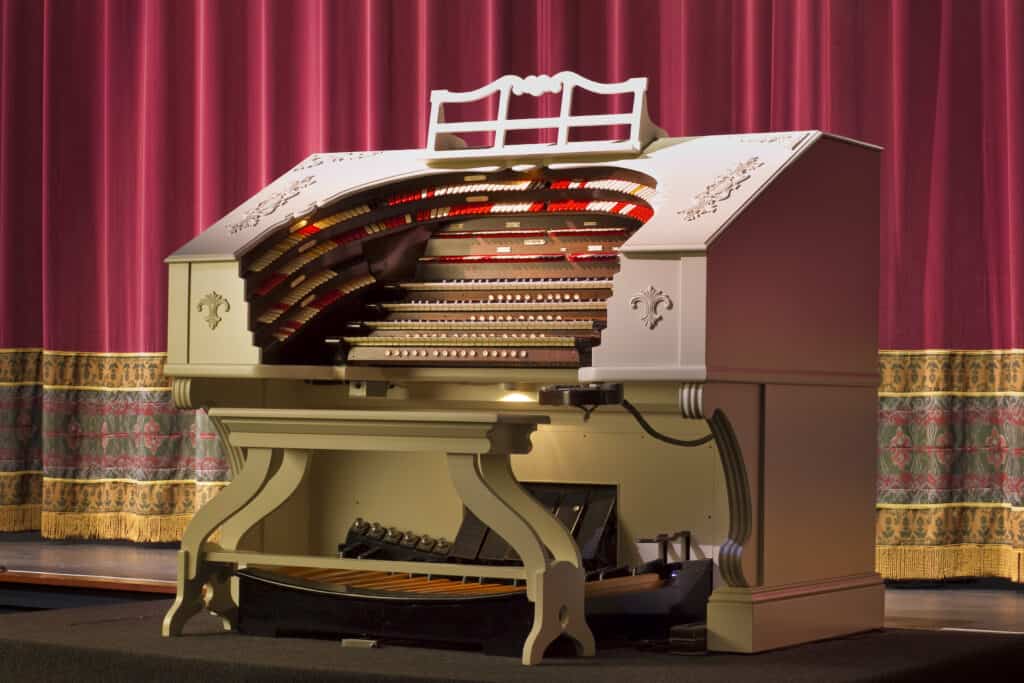
Don Phipps: Actually, I started upon retirement to build, what I hoped to be my magnum opus, a large theater pipe organ. I’d collected parts for about 50 years but following business and raising a family, I really didn’t have the opportunity to realize this dream until retirement. At that point, I started on a six-and-a-half-year project to utilize the parts I had collected to rebuild them, restore them and assemble them into an organ, including 32 sets of pipes. However, seeing the years go by, I began to think of the time when the organ would need a new home and at that time, I started to look for a suitable home. I found that finding the home was much more difficult than building the organ. I had just about given up when it was my privilege to meet Troy Siebels and become involved with The Hanover Theatre to start this project.
meeting troy siebels
Lisa Condit: So, what did Troy say to you? He is one of the most approachable people anybody will ever meet.
Don Phipps: I had made a cold call to Troy, and I said “I understand, from what I read in the newspapers, that you are restoring and reopening a theatre. You have a theatre, I have a large theatre pipe organ. Maybe we should get together.” A week later, I met him at the Shanklin Music Hall in Groton, where there was the large Wurlitzer organ that I had been involved with and the installation thereof. We demonstrated the organ and Troy said “Well, sounds great, I wonder if we have room for it?” I had thought that was all it was, and much to my joy and surprise, a week later there was some architect drawings in my mailbox with large scale drawings of the building, and I determined that there was space available to install the organ. It was then that we agreed to start this project. To show the caliber of people that I’ve been dealing with at The Hanover Theatre, the only thing that exists, any sort of a document regarding the gift of this organ, is a handshake between Troy and myself.
the organ lift
Lisa Condit: I remember discussions early on about the organ and one of the potential sticking points was the lift. People might not realize that you need an organ lift. Do you want to tell people what I mean by that?
Don Phipps: Yes, this is very true. Most of the larger and notable theatres have the console of the organ installed in the orchestra pit, and of course, in the old days, the pit was almost always used for the orchestra. When the organ was needed, it would majestically rise out of the pit on an elevator up to stage level where it could be played, and then it would sink out of view. This lift was purchased and ordered, and getting it installed as I recall was $40,000. It will lift a total of three tons to a height of 10-and-a-half feet above the floor of the orchestra.
a christmas carol
Lisa Condit: If anyone has been to one of our shows and you’ve seen one of the pre-show organ performances, you know what we’re talking about as far as the organ lifting on this elevator to stage level. It can be seen in A Christmas Carol. I remember the opening scenes of A Christmas Carol in which the organ descends into the orchestra pit and the whole stage is dark. It’s very dramatic. You still hear the organ music, but it really does add something and a sense of richness to the whole experience that, without your help, we never would have realized.
Don Phipps: It’s what I refer to as a synergistic situation. The Hanover Theatre had the space and had the facilities to house the organ, I had the instrument and I like to think it was a match made in heaven. I think that certainly my golden years have been tremendously enriched by this project.
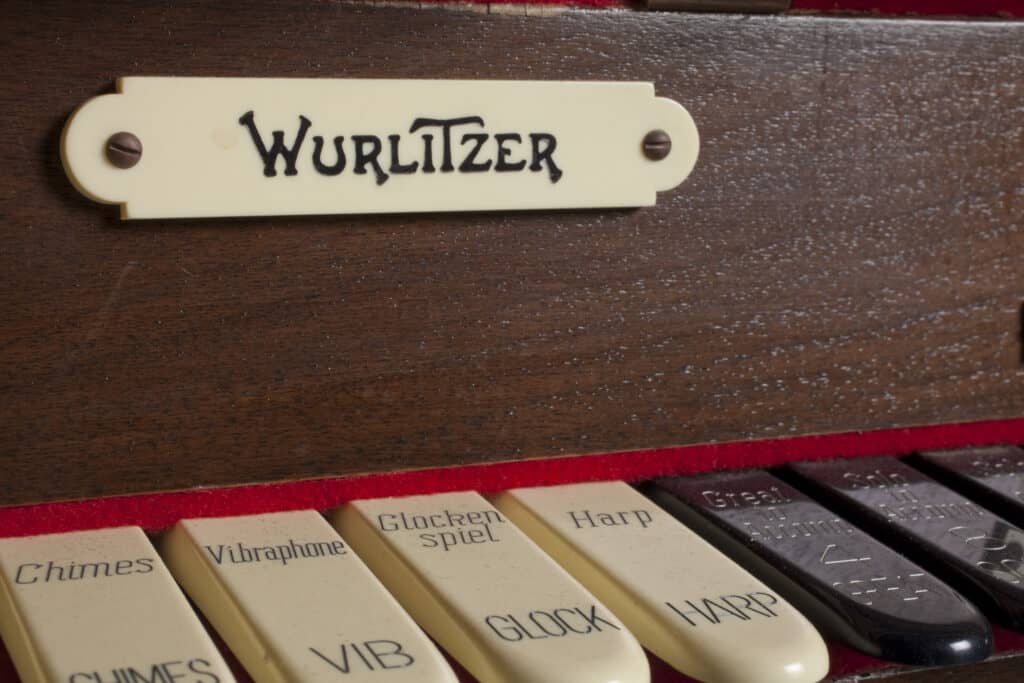
Lisa Condit: We have really enjoyed working with you, that is for sure. We have a whole new series that we started last year and we’re continuing with this year, and that’s our silent movie series. You’ve really been instrumental in bringing this project forward for all of us, letting us know that this is a popular, cool thing and it’s really starting to catch on. You’re also the person that turned us on to Clark Wilson. How did you meet Clark Wilson?
meeting clark wilson
Don Phipps: There’s a national organization known as the American Theatre Organ Society. Currently I have the privilege of being on the board of directors. It’s made up of people that love the theater organ and love the art form. We must never forget the whole reason for the being of the theater pipe organ was to accompany silent motion pictures. I’ve known Clark for a number of years, and I’ve done many projects with him. Clark is primarily regarded as an extremely talented organist and for his motion picture accompaniments, but he is also a noted organ architect, an engineer that’s capable of designing and doing the tonal finishing of the theater pipe organ. I hired him to tonally finish the organ at The Hanover Theatre and I also work with him on other projects. He’s a wonderfully talented individual. He not only plays well, but he’s very knowledgeable when it comes to every aspect of theater pipe organs.
Lisa Condit: You’ve touched on something, and the very technical part of this instrument. I don’t think that we can really underscore that enough. Do you want to tell people a little bit about how the organ and the console works?
how the organ works
Don Phipps: Most people think that the entire instrument is the console, but nothing could be further from the truth. Actually, the console is just the tip of the iceberg, so to speak. The organ in The Hanover Theatre has 35 sets of pipes, totaling 2,495 pipes. There are seven tuned percussions, tuned musical instruments with a total of 307 notes. There’s also many other traps and effects like drums, cymbals and so forth. There’s the full-sized piano controlled from the organ. The organ is actually a wind instrument, the sounds are all generated by pipes that are blown by wind. To give you some idea, in the sub-basement of The Hanover Theatre is a 30-horsepower blower that weighs 1,200 pounds. It develops up to 5,000 cubic-feet of air a minute. This air is distributed through two 14-inch sheet metal lines through the chambers on either side of the proscenium arch, and up there, is 17 tons of mechanisms. Every one of the pipes has to be electrically controlled. Most components of the organ were built between 1920 and 1930, the only modern aspect of the instrument is the control system. The control system is done with a PC and about 50 assorted circuit boards that control each individual pipe, each individual instrument and each function necessary.
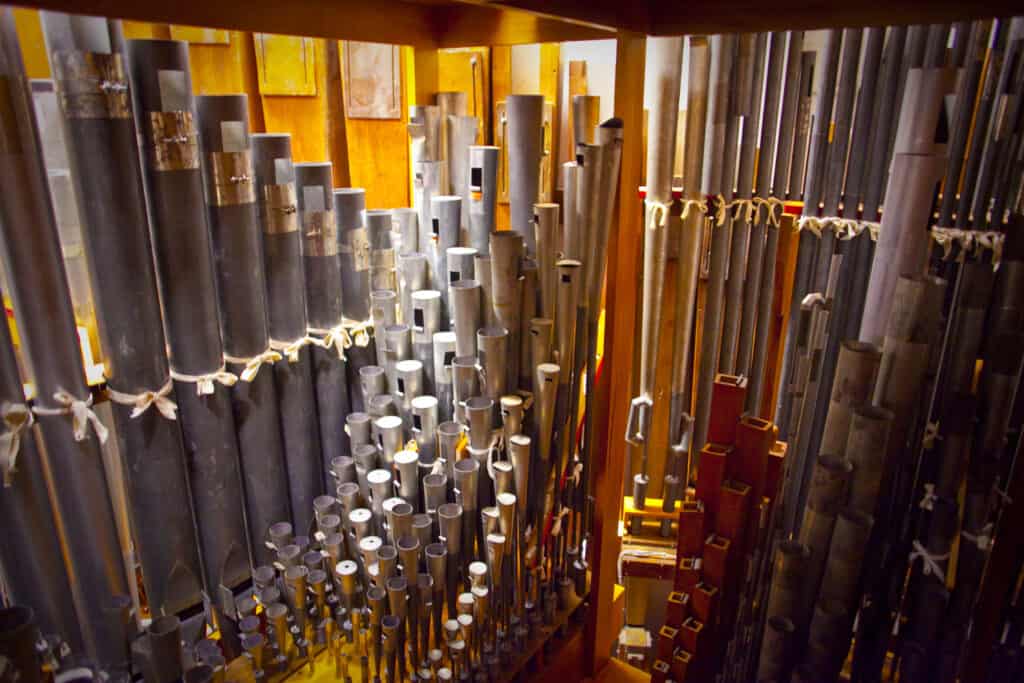
Lisa Condit: That is incredible. You mentioned final tuning, what does it mean to tune an instrument with all these pipes and components?
tuning the organ
Don Phipps: The tuning is more of an ongoing maintenance factor. The tonal finishing consists of a much more highly skilled adjustment of the organ. Each pipe is adjusted to have the right speech or sound, the right volume and pitch. Of course, these being basically air whistles, the tuning is primarily accomplished by changing the mechanical length of the individual pipe.
Lisa Condit: That is completely incredible. What a labor of love, Don.
Don Phipps: It has been a labor of love and what few people realize is that pipelines are extremely labor intensive. To give you some idea of this, there was a total of 10,000 hours spent in the initial assembly of the organ in my shop, over a six-and-a-half-year period. Once we moved the instrument to The Hanover Theatre, our crew, so far, has worked 1,500 man-days, and granted some of us are getting a little old, so the man days can sometimes be six, seven or eight hours. But, there’s been about 10,000 hours of labor just with the installation alone.
Lisa Condit: The energy and dedication is unbelievable with you and your team, making sure that this organ ended up at The Hanover Theatre, that it was set up and that it’s maintained. You recently had a birthday party at The Hanover Theatre, and we now have an organ fund so, in the future, we can make sure that this instrument is maintained. You just mentioned 1,000 man-days, not even man-hours, that’s incredible. If we had to pay to have our organ maintained, how much do you think that it would cost to pay an outside service every year?
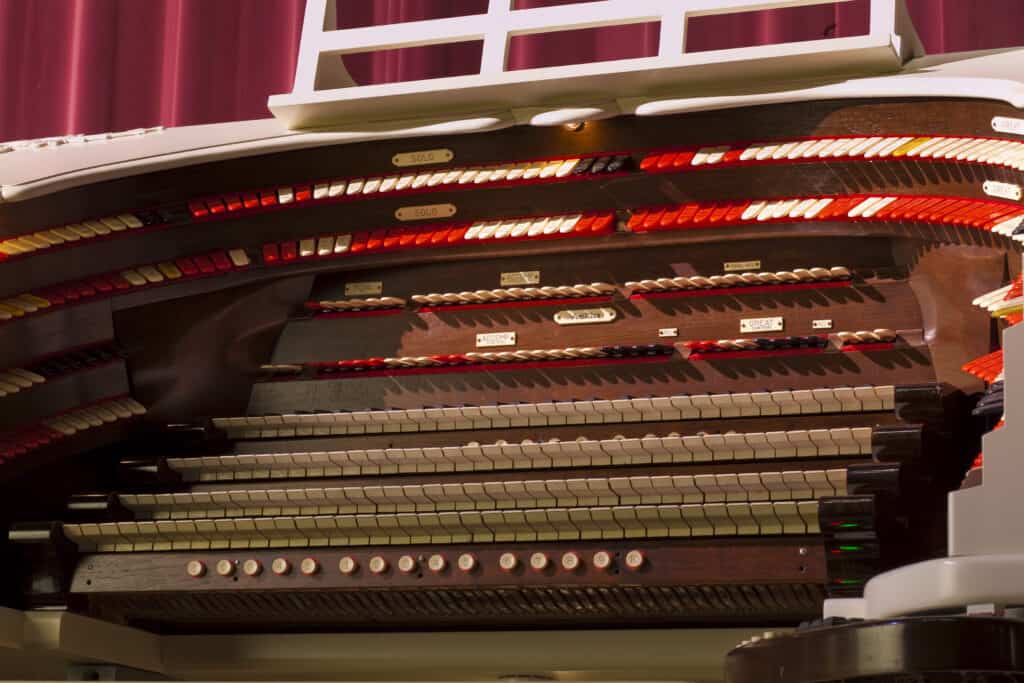
cost of maintenance
Don Phipps: Now that the organ has been totally rebuilt, the maintenance tuning should be necessary once each year. That would probably be about $2,000 a year.
Lisa Condit: In the whole scheme of things, that is not really a lot of money. That is why when people donate to the organ fund, donations of any size are welcome because we’re trying to really get to that $2,000 level, right?
donations
Don Phipps: This is true. The organ should be good for maybe 40 years without needing a major overhaul. The advantage of starting with something that has been totally rebuilt is the fact that hopefully, barring roof leaks or some other catastrophe, the organ can continue to run reliably for a good number of years without further major expense.
Lisa Condit: Thank you, Don, for all that you do for us, for the city of Worcester and for the organ community. Thank you for bringing organ lovers right here to Central Massachusetts and for really leading the charge so that we can continue to spread the joy that this instrument can provide.
Don Phipps: The pleasure has been mine.
